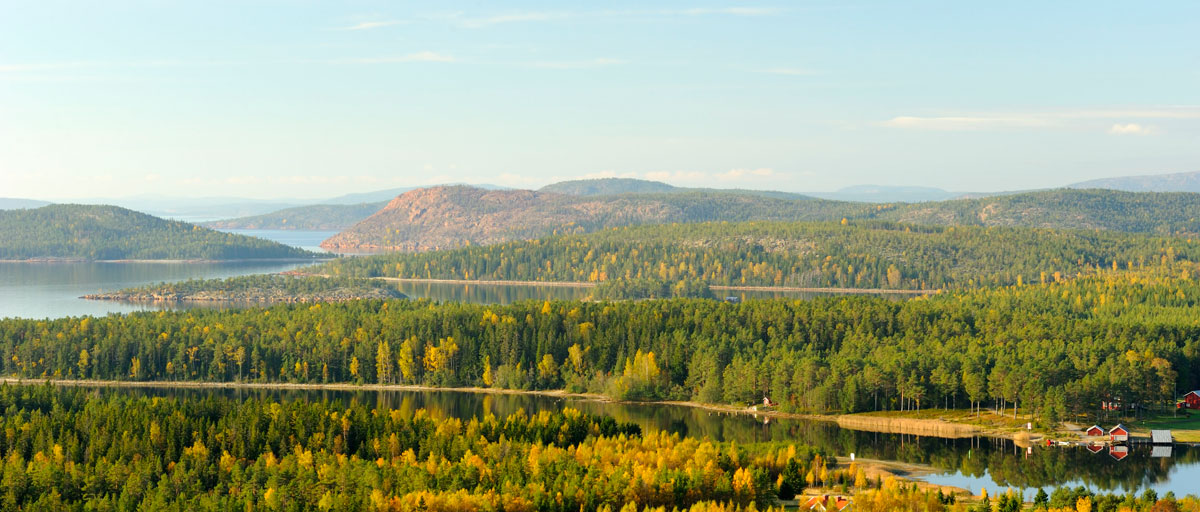
A new study shows that mixed forests compared to monocultures provide higher levels of multiple ecosystem services, including timber production. Photo: P. Turander/Azote
Forestry
Seeing the forest for more trees
Forestry and nature conservation can benefit from higher tree species diversity
- Study shows that mixed forests compared to monocultures provide higher levels of multiple ecosystem services, including timber production
- The study is based on data from the Swedish National
Forest Inventory and the Swedish Forest Soil Inventory - Both forestry and nature conservation could benefit from multiple tree species and, thus, provide a greater diversity of ecosystem services
Contemporary forestry in Sweden is largely based on monocultures — usually pine or spruce — mainly because it is considered more rational. But well-managed forests also generate other ecosystem services beyond timber production, such as biodiversity, carbon storage and berry production.
A new study from the research programme Future Forests shows that mixed forests compared to monocultures provide higher levels of multiple ecosystem services, including timber production.
The study, published in the scientific journal Nature Communications, is partly at odds with ingrained ideas in Swedish forestry. Only about 7.5 percent of the productive forest land in Sweden is composed of mixed forests, according to Swedish National Forest Inventory data for 2011.
"Many have suggested that a high diversity of tree species has a positive influence on a number of ecosystem processes, but so far this correlation has mainly been analyzed for one process or ecosystem service at a time," says centre researcher Fredrik Moberg, a co-author to the study.
Different tree species provide different benefits
The study, carried out by an international research team from Sweden, UK, Switzerland and Panama, is based on data from the Swedish National Forest Inventory and the Swedish Forest Soil Inventory.
By looking at the significance of the presence of different tree species for six different ecosystem services (tree growth, carbon storage, berry production, food for wildlife, presence of dead wood and biodiversity in the understory vegetation) the study shows that all six services were positively related to the number of tree species.
"Different tree species provide different services. For example, the amount of spruce trees was linked to high growth rates, the amount of pine to berry production, while higher carbon storage was found in areas with high abundance of birch"
Fredrik Moberg, co-author
To get more of all services, forestry might need to increase tree diversity. Other studies of forests in Central Europe, the Mediterranean and Canada support these results.
Can't have more of everything
The study also examined the relationship between different ecosystem services. For example, increased timber production seems to be negatively correlated to the production of berries and food for wildlife, as well as the occurrence of dead wood.
On the other hand, food for wildlife was positively associated with both berry production and biodiversity in the understory vegetation.
"Unfortunately, we can't have more of everything, sometimes you have to make trade-offs between different ecosystem services," explains lead author Lars Gamfeldt from Göteborg University.
"But our results show that both forestry and nature conservation could benefit from multiple tree species and, thus, provide a greater diversity of ecosystem services," Gamfeldt concludes.
About Future Forests
The Future Forests research programme aims to generate new knowledge for managing forests in an economically, socially and environmentally sustainable manner in a future characterized by climate change and increased globalization. Future Forests is financed by Mistra, SLU, Umeå University, Forestry Research Institute and the Swedish forestry.






